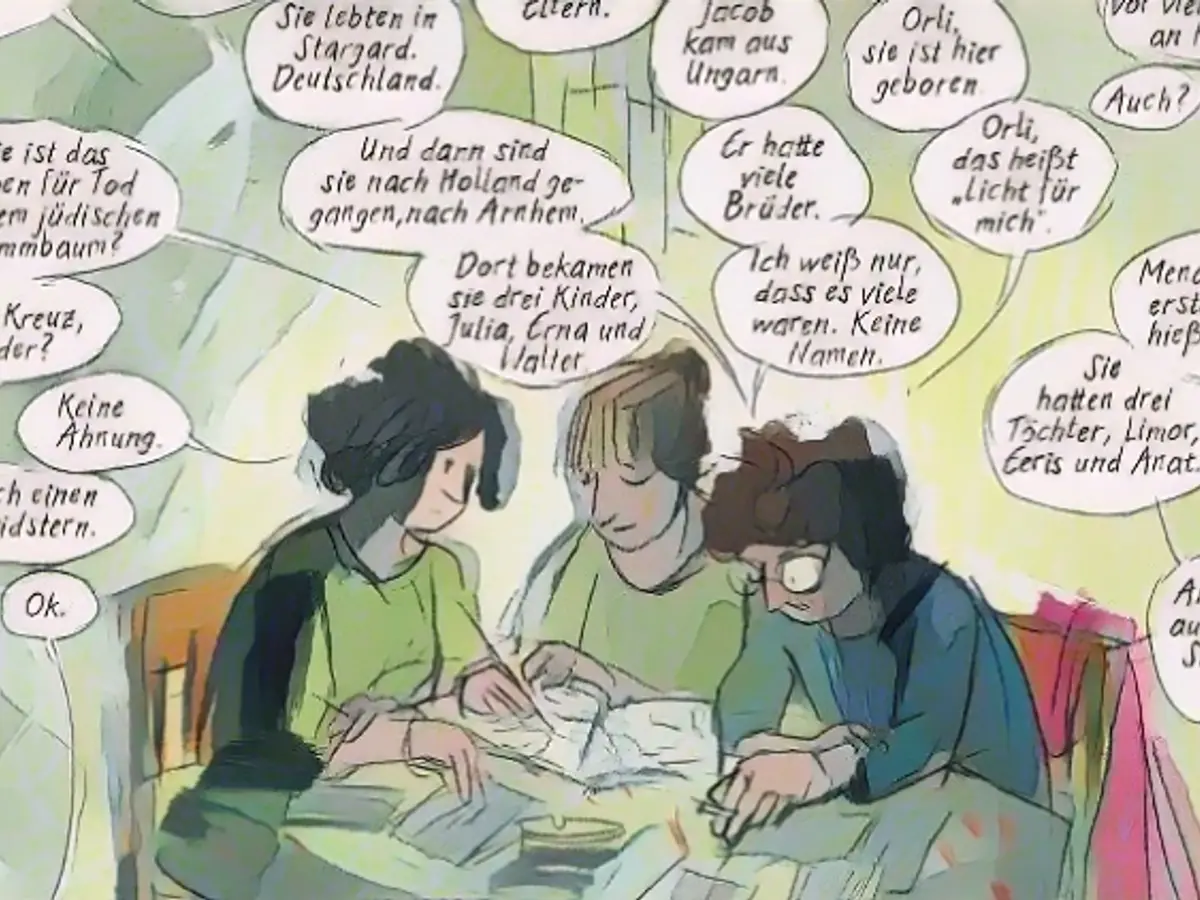"Embracing the Shadows"
Meet Emmie Arbel, a woman with an extraordinary past and a resilient spirit. After being deported by the Germans during her childhood, she survived several concentration camps, only to endure further abuse at the hands of her Jewish foster father. Today, her life story is brilliantly portrayed in the graphic novel "Emmie Arbel: The Tapestry of Memory," penned by Barbara Yelin.
In the quaint Israeli village of Kirjat Tiv'on, Emmie Arbel sits at her kitchen table, painstakingly piecing together her family tree. Beyond the names of her parents and grandparents, the entries are grimly touching: those lost to the Holocaust, the siblings who endured and survived, and the descendants scattered across the world.

)
Hauntingly beautiful, the graphic novel vividly unfolds Emmie Arbel's story, which spans the depth of human resilience and the horrors of history. The scenes transition flawlessly between past traumas, buried memories, and the comfort of present-day Israel, creating an emotional rollercoaster that compels readers to delve deeper.

)
Born in The Hague in 1937, Arbel and her family faced unimaginable tragedy, with her capture and deportation by the Germans at a tender age. Things took a dire turn when they found themselves in the Westerbork transit camp. Attempting to survive the seemingly endless series of concentration camps, Arbel faced debilitating illness and despair, witnessing many succumb to the horrors surrounding her.

)
After the war's end, Arbel moved to Sweden, only to be battered by yet another episode of trauma: years of physical and emotional abuse, courtesy of her Jewish foster father. Relentlessly persistent, Arbel would later overcome all obstacles and rise above her traumas, eventually emigrating to Israel in search of solace and a new beginning.
Penned and illustrated by Barbara Yelin, the graphic novel "Emmie Arbel: The Tapestry of Memory" weaves a captivating tale that takes readers through the myriad hues of Arbel's journey. The narrative is fragmented yet consistent, mirroring the nature of memory as an intricate web of experiences and emotions that leave lasting imprints on the psyche.
Yelin employs the comic form to great effect, using color palettes and visual juxtapositions to accentuate the stark contrasts between the horrors of Arbel's past and the promises of her new life in Israel. Collapses and gaps within the narrative echo the fading and resurfacing fragments of her memories, further emphasizing the raw and unfiltered nature of Emmie's experiences.
In tellings that bypass the chronological, Yelin captures the ebb and flow of Arbel's life, drawing attention to her restlessness and resilience, which have allowed her to persevere in the face of seemingly insurmountable adversity.
Reminiscent of "Irmina," Yelin's earlier graphic novel inspired by her own family history, the focus is now shifted from fictionalized accounts to a firsthand account, while the illustrated format provides an intimate insight into Emmie Arbel's day-to-day life. This approach allows readers to witness the perpetual state of her memories, which never cease to linger around her.
The strength of the graphic novel lies in its comprehensive exploration of Arbel's life beyond the Shoah. Having faced the horrors of the Holocaust and its aftermath, the narrative illuminates her subsequent journey to find safety, grapple with her past, and learn to heal. The book serves as a poignant reminder of the lives that continue after the end of world-altering events, shedding light on the complexities of dealing with trauma, the search for a sanctuary, and the indomitable human spirit.
- "Emmie Arbel: The Tapestry of Memory" is a graphic novel that tells the life story of Emmie Arbel, who survived the Holocaust as a child and confronted further abuse at the hands of her Jewish foster father.
- Painted by acclaimed comic artist Barbara Yelin, the narrative is told through a fragmented lens, capturing the very essence of memory as a patchwork of experiences and emotions.
- Through the use of vivid visual storytelling and juxtaposition, the graphic novel explores Arbel's darkest days and her journey to heal, find solace, and live a new life in Israel.
Inspiration drawn from sources: ,






